Jane Bown
(Picture found on http://www.digitalpicturezone.com)
("People describe me as a portrait photographer, but I am not. I am a hack" - Jane Bown http://www.guardian.co.uk/artanddesign/2009/oct/18/jane-bown-photographer-retrospective-exposures).
Jane bown was a photojournalist for The Observer in 1949. Before she worked for The Observer she worked as a child portrait photographer. The first portrait for The Observer she took was of Bertrand Russel.
All her photos were in black and white, while using only available light and sorts her settings by how the light falls on her hand.
“I preferred the simplicity and directness of black and white. It emphasizes and the underlying patterns of light and dark and confers a natural harmony on the subject. Black and white is quick where colours is noisy and distracting, and I feel that it allows the personality of the sitter to come through” - (book)Exposure, Jane Bown.
The main reason i chose Jane Bown was i work like her, the majority of the photos i take are in black and white also i only use lighting that is already there mostly natural lighting.
[Pictures found on artrabbit.com]
(picture found on artrabbit.com)
She took photos of many famous people, including Queen Elizabeth II for her eightieth birthday portrait.
While photographing people she’ll become invisible to the person she is taking a photo of, this is because she prefers that the person can just be themselves than making a situation.
This is a photo of Samuel Beckett, this is one of her "Jackpot" shots. I like how the tone brings out the texture of Samuels face.
Philip was born in Connecticut in 1951. He studied at the School of the Museum of Fine Arts, Boston fine arts in Boston then went onto study at Yale university where in 1979 he was awarded Master of Fine Arts in Photography.
A lot of his work was very carefully planned out and staged but when people looked at his work they would think it was a photo of someone every day life.
His style of work is documentary photography. The title of his photos are usual where the place is.
"His work is about taking everyday occurrences beyond the realm of normality, trying to inspire in his picture's spectators an awareness of the psychology and emotion contained in real-life situations."
[wikipedia –“ http://en.wikipedia.org/wiki/Philip-Lorca_diCorcia”]
He uses natural lighting so the photos look natural, otherwise it would be a give away that the photos are staged.
[http://www.thecollectiveshift.com/show/portfolio/diCorcia]
This photo is titled "Street work". i like how one woman is in light and the rest of the photo has dull colours, it makes her stand out which makes her the main object in this photo.
[Picture found at http://gothamist.com/2006/02/14/good_news_for_p.php]
[Picture found at http://gothamist.com/2006/02/14/good_news_for_p.php]
In 2001 diCorcia was sued by an Orthodox Jewish man because Philip-Lorca diCorcia sold a photo with him in without his permission this photo was also in his book "heads" it was also hung up in a gallery in Chelsea.
I enjoyed looking at his "heads" work, because the photographs look like they were staged (even though it partly was). I really like how focused the image is on the persons face without them really knowing.
When taking photographs of a random person (well anyone) you should get them to sign a model release form so you have permission from them to sell/publish an image with themselves in it.
Diane Arbus
I enjoyed looking at his "heads" work, because the photographs look like they were staged (even though it partly was). I really like how focused the image is on the persons face without them really knowing.
When taking photographs of a random person (well anyone) you should get them to sign a model release form so you have permission from them to sell/publish an image with themselves in it.
Diane Arbus
[Picture found http://www.flickr.com/photos/62649090@N00/347623633/]
Most people go through life dreading they'll have a traumatic experience. Freaks were born with their trauma. They've already passed their test in life. They're aristocrats.
- Diane Arbus
- Diane Arbus
Diane was born in New York in 1923. She was famous for her black and white photographs of "freaks". She was taught how to photograph by her husband Allan Arbus.
Her first magazine assignment was published in July 1960 in the magazine Esquire, and she also wrote articles that accompanied her photos in magazines like The New York Times Magazine.
I like her photographs because she chose individuals that looked different than anyone else. She also did black and white photographs which i admire because i love how the tone brings out the patterns of people and can also set the mood.
I love the people she used for her photographs because the images show the person they really are and thy're not pretending to be someone they're not.

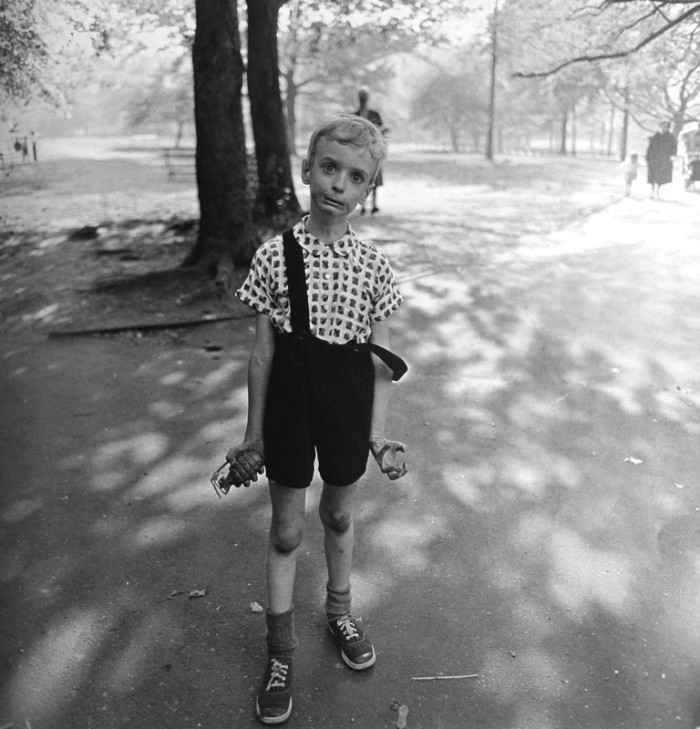
Her first magazine assignment was published in July 1960 in the magazine Esquire, and she also wrote articles that accompanied her photos in magazines like The New York Times Magazine.
I like her photographs because she chose individuals that looked different than anyone else. She also did black and white photographs which i admire because i love how the tone brings out the patterns of people and can also set the mood.
I love the people she used for her photographs because the images show the person they really are and thy're not pretending to be someone they're not.
[Picture found http://thatbeadgirl.com/wp/?p=519] [Picture found http://lolaroes.blogspot.com/2009/11/fur-imaginary-bio-of-diane-arbus.html]
After 1962, she used a Rollieflex twin-lens reflex camera . When she took photographs she would hold the camera at waist level so she was photographing reality than what she could see through the lens.
In 1971 Diane Arbus took her own life due to depression.
Corrine Day
"Corinne opened the door for a whole generation of photographers, designers, models and stylists who suddenly saw that the fashion industry didn’t have to be this exclusive club for the privileged and perfect." - Belinda White
Corrine Day was a british fashion/documentary photographer, she also use to be a fashion model.
In 1993 she photographed Kate Moss for the cover of Vogue.
In 2007 Corrine photographed Kate Moss, they had a serious conversation which made Kate Moss show her true colours during the shoot.

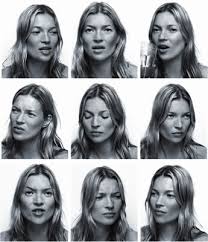
Corrine Day's photography inspires me because she chooses the right locations and she makes the tone of Kate Moss' skin really soft. And she does do black and white photos which i do admire.
August 7th 2009 Corrine was diagnosed with a life threatening brain tumor, Kate Moss and a few other people raised money for Corrine to have chemotherapy in the USA.
This is my favourite photo she has taken i love how the lighting is, it brings out the vibrancy of the models skin in the image to give it some life so it isn't dull.
Chris Killip
Chris Killip was born in The Isle of Man and in 1964 moved to London where he became an assistant to an adverting photographer named Adrian Flowers then went on to become a freelance photographer.
He was well known for his black and white photographs (that's why i chose to research him). In 1988 his work was published as "In Flagrante".
The photographs he took were in the era where Margret Thatcher was in government and most of his images represents everything Thatcher stood for and how hard living was for people. "a dark, pessimistic journey" - quoted by Gerry Badger [wikipedia - "http://en.wikipedia.org/wiki/Chris_Killip"].

[Picture found http://www.nyphotoreview.com/NYPR_REVS/NYPR_REV769.html]
This is my favourite photos Chris Killip did. The black and white really sets the mood of depression as well as the lighting, just by looking at the photo you can tell it was a rough time for everyone.
1988 pirelli paid Chris Killip to photograph the tire factory in Burton-Upon-Trent. At first he wasn't successful because he only used the light available which wasn't much because it was a dark factory, two months later he started to use a large format camera with a flash and photographed for three months. In 1989 his finished work was exhibited in the Victoria and Albert Museum.
Speed-Over
This photographer isn't known worldwide but they caught my eye on a website called DeviantART.
Here is an interview i did with them:
What inspires you to take portraiture photographs?
I just have better direction when the focus is on people. Its a more natural flow to work with a person rather than an object, and i find that if the person is the subject of the photo then working with objects in the composition just comes more naturally.
What gave you the idea of taking photographs the style you have done?
I guess my style that you are talking about is called "alternative" by most people, and I had the idea to do that because it reflects what I find absolutely fasinating. I really find mainsteam glamour, portraiture, weddings, etc to be insainly boring as a photographer (dont get me wrong, there are some fantastic wedding images out there, but when it comes to taking them...yaaaawn).
Did any famous photographers inspire you for any of your photographs? If so who?
Robert Alvarado, Dave Hill, Jill Greenberg, Andy Silvers, and Dangerous Dolly are a few of my favorite photographers that inspire me to do what i do. Mr. Alvarado has actually been my biggest inpiration, and I find him to be the king of modern pin-up.
Photos By Speed-Over
You can find Speed-Over on http://speed-over.deviantart.com/
David Hockney
“It is very good advice to believe only what an artist does, rather than what he says about his work.” - David Hockney
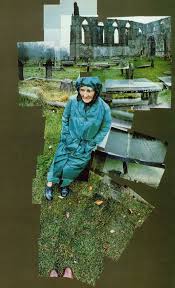 David Hockney is famous for being a painter, printmaker, stage designer and photographer. His work is manily in the style of pop art.
David Hockney is famous for being a painter, printmaker, stage designer and photographer. His work is manily in the style of pop art.
 He discovered joiners accidently, he came across this method when he was taking polaroid photos of his living room and glued them together, this wasn't intended. When he had finished he realized it went into sequence as if the viewer was moving through his living room, after this he stopped painting for a while to follow this new style of photgraphy. He got back into painting due to being frustrated with photography's one eyed approach.
He discovered joiners accidently, he came across this method when he was taking polaroid photos of his living room and glued them together, this wasn't intended. When he had finished he realized it went into sequence as if the viewer was moving through his living room, after this he stopped painting for a while to follow this new style of photgraphy. He got back into painting due to being frustrated with photography's one eyed approach.
[Pictures found google images]
Herb Ritts
Herb Ritts was an american fashion photographer, most of his work was black-and-white photography and portraits some in the style of greek sculputres. Some of his more famous pieces are of male and female nudes in what are called 'glamour photography'.
While living in Los Angeles, he became interested in photography, Herb and friend decided to shoot some photographs in front of an old Buick (automobile sold in the United States), this photograph made Herb become more serious about photography.
In 1981 he photographed Brooke Shields for the cover of Elle, then he photographed Olivia Newton-John for her Physical album. Five years later he did the same cover pose with Madonna for her 1986 release True Blue.

He took many nude shots of Cindy Crawford and then went on to working with many magazines like Rolling Stone, Vogue and Glamour.

This photo of madonna i really like due to the contrast also the lighting making the texture of her skin really smooth. Also the lighting brings out her features of her face really well.
[Pictures found on google images]
Stephanie Cammarano
What inspires you to take portraiture photographs?
I have always been inspired by people, and loved the idea of depicting a person in a specific way using photography as a tool to communicate my ideas and thought processes. In terms of what inspires me, I try to find inspiration in all aspects of life. It's important to research current photographers and models, however I try to dig deep and find inspiration in the most obscure places. I think it's a great idea to also look at music, literature and film for ideas and as a reference, they often inspire the most interesting concepts for a portrait.
What gave you the idea of taking photographs the style you have done?
My aesthetic and style is quite dark. I have always been drawn to quite a dark and edgy style, this dates back right back to my childhood, as I started an early interest in horror films and alternative music such as metal and punk. Over the years I have refined my style to something that is quite conceptual and sometimes theatrical, but I still gravitate towards expressing a very dark mood in my work.
Did any famous photographres inspire you for any of your photographs? If so who?
I am always inspired by many different photographers, the work I produce is mostly influenced by fashion photographers. In the beginning, it was the work of Steven Klein, I fell in love with his fashion images because of the stylized and conceptual nature of them, and how elaborate his sets are. I really love the idea of creating art through fashion. His work alone inspired me to become a fashion photographer. Some other photographers I love include Ellen Von Unwerth, Steven Meisel, Craig McDean, Solve Sundsbo, Richard Avedon, Daniel Jackson, just to name a few. I am also forever studying current and past fashion designers, they help to inspire with their beautiful and innovative contributions to the industry.
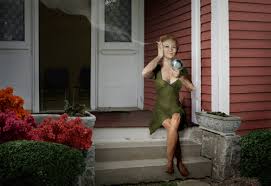 The reason why i chose to do research on Suellen Parker is because her work is out of the ordinary. When i looked at her work it kind of confused me about the photo. The questions that ran through my head were "Are these people edited?" "What did she use to make the people?" "How did she get them to where the shot was taken?"
The reason why i chose to do research on Suellen Parker is because her work is out of the ordinary. When i looked at her work it kind of confused me about the photo. The questions that ran through my head were "Are these people edited?" "What did she use to make the people?" "How did she get them to where the shot was taken?"
I then looked her up a bit more.
The characters in her photographs are from a memory from her past or a stranger that she has remembered. When she thinks of these people she would create the with plastiline clay. Once she had put this person together she would then photograph it in a studio with a blank backdrop, then Suellen would build up a library of photographs of walls and things she can use as a backdrop to use with the model.
 Once she has everything she needs Suellen would start to digitally editing the clay models by adding colour to them, because all the models are is grey clay. She would next find the right background to match the personality of the model and then just messing around with the photo adding and taking things away until she feels as if it is finished.
Once she has everything she needs Suellen would start to digitally editing the clay models by adding colour to them, because all the models are is grey clay. She would next find the right background to match the personality of the model and then just messing around with the photo adding and taking things away until she feels as if it is finished.
[Pictures found on google images]
Corrine Day
"Corinne opened the door for a whole generation of photographers, designers, models and stylists who suddenly saw that the fashion industry didn’t have to be this exclusive club for the privileged and perfect." - Belinda White
Corrine Day was a british fashion/documentary photographer, she also use to be a fashion model.
In 1993 she photographed Kate Moss for the cover of Vogue.
In 2007 Corrine photographed Kate Moss, they had a serious conversation which made Kate Moss show her true colours during the shoot.
[Picture found http://www.wwd.com/media-news/fashion-memopad/corinne-day-dies-at-45-3232368]
August 7th 2009 Corrine was diagnosed with a life threatening brain tumor, Kate Moss and a few other people raised money for Corrine to have chemotherapy in the USA.
This is my favourite photo she has taken i love how the lighting is, it brings out the vibrancy of the models skin in the image to give it some life so it isn't dull.
Chris Killip
Chris Killip was born in The Isle of Man and in 1964 moved to London where he became an assistant to an adverting photographer named Adrian Flowers then went on to become a freelance photographer.
[Picture found http://www.askyfilledwithshootingstars.com/wordpress/?p=678]
He was well known for his black and white photographs (that's why i chose to research him). In 1988 his work was published as "In Flagrante".
The photographs he took were in the era where Margret Thatcher was in government and most of his images represents everything Thatcher stood for and how hard living was for people. "a dark, pessimistic journey" - quoted by Gerry Badger [wikipedia - "http://en.wikipedia.org/wiki/Chris_Killip"].
[Picture found http://www.nyphotoreview.com/NYPR_REVS/NYPR_REV769.html]
This is my favourite photos Chris Killip did. The black and white really sets the mood of depression as well as the lighting, just by looking at the photo you can tell it was a rough time for everyone.
1988 pirelli paid Chris Killip to photograph the tire factory in Burton-Upon-Trent. At first he wasn't successful because he only used the light available which wasn't much because it was a dark factory, two months later he started to use a large format camera with a flash and photographed for three months. In 1989 his finished work was exhibited in the Victoria and Albert Museum.
Speed-Over
This photographer isn't known worldwide but they caught my eye on a website called DeviantART.
Here is an interview i did with them:
What inspires you to take portraiture photographs?
I just have better direction when the focus is on people. Its a more natural flow to work with a person rather than an object, and i find that if the person is the subject of the photo then working with objects in the composition just comes more naturally.
What gave you the idea of taking photographs the style you have done?
I guess my style that you are talking about is called "alternative" by most people, and I had the idea to do that because it reflects what I find absolutely fasinating. I really find mainsteam glamour, portraiture, weddings, etc to be insainly boring as a photographer (dont get me wrong, there are some fantastic wedding images out there, but when it comes to taking them...yaaaawn).
Did any famous photographers inspire you for any of your photographs? If so who?
Robert Alvarado, Dave Hill, Jill Greenberg, Andy Silvers, and Dangerous Dolly are a few of my favorite photographers that inspire me to do what i do. Mr. Alvarado has actually been my biggest inpiration, and I find him to be the king of modern pin-up.
Photos By Speed-Over
This is my favourite photo because it's out of the ordinary and the dull background really brings out the colours, patterns and texture of her clothes.
You can find Speed-Over on http://speed-over.deviantart.com/
David Hockney
“It is very good advice to believe only what an artist does, rather than what he says about his work.” - David Hockney
His photography work was mainly photocollaging. He would use a lot of small polaroid snaps or photolab-prints of a single subject he would then arrange them to make a full image, because each photograph was taken at different times and from different angles, the ending image has an affinity with cubism. He refered to these images as "joiners".
[Pictures found google images]
Herb Ritts
Herb Ritts was an american fashion photographer, most of his work was black-and-white photography and portraits some in the style of greek sculputres. Some of his more famous pieces are of male and female nudes in what are called 'glamour photography'.
While living in Los Angeles, he became interested in photography, Herb and friend decided to shoot some photographs in front of an old Buick (automobile sold in the United States), this photograph made Herb become more serious about photography.
In 1981 he photographed Brooke Shields for the cover of Elle, then he photographed Olivia Newton-John for her Physical album. Five years later he did the same cover pose with Madonna for her 1986 release True Blue.

He took many nude shots of Cindy Crawford and then went on to working with many magazines like Rolling Stone, Vogue and Glamour.
This photo of madonna i really like due to the contrast also the lighting making the texture of her skin really smooth. Also the lighting brings out her features of her face really well.
[Pictures found on google images]
Stephanie Cammarano
This photographer isn't known worldwide but they caught my eye on a website called DeviantART.
Here is an interview i did with them:
What inspires you to take portraiture photographs?
I have always been inspired by people, and loved the idea of depicting a person in a specific way using photography as a tool to communicate my ideas and thought processes. In terms of what inspires me, I try to find inspiration in all aspects of life. It's important to research current photographers and models, however I try to dig deep and find inspiration in the most obscure places. I think it's a great idea to also look at music, literature and film for ideas and as a reference, they often inspire the most interesting concepts for a portrait.
What gave you the idea of taking photographs the style you have done?
My aesthetic and style is quite dark. I have always been drawn to quite a dark and edgy style, this dates back right back to my childhood, as I started an early interest in horror films and alternative music such as metal and punk. Over the years I have refined my style to something that is quite conceptual and sometimes theatrical, but I still gravitate towards expressing a very dark mood in my work.
Did any famous photographres inspire you for any of your photographs? If so who?
I am always inspired by many different photographers, the work I produce is mostly influenced by fashion photographers. In the beginning, it was the work of Steven Klein, I fell in love with his fashion images because of the stylized and conceptual nature of them, and how elaborate his sets are. I really love the idea of creating art through fashion. His work alone inspired me to become a fashion photographer. Some other photographers I love include Ellen Von Unwerth, Steven Meisel, Craig McDean, Solve Sundsbo, Richard Avedon, Daniel Jackson, just to name a few. I am also forever studying current and past fashion designers, they help to inspire with their beautiful and innovative contributions to the industry.
The title to this photo is "The Epitome Of Self-Indulgence" these are lyrics to a song by Parkway Drive.
This photo shows Gluttony, this does connect to my theme as mine is to do with sweets and i do class donuts as a sweet.
The intention of the piece is to represent over-indulgence in a grotesque manner, the use of blood is to give the idea of gluttony being a deadly sin.
The intention of the piece is to represent over-indulgence in a grotesque manner, the use of blood is to give the idea of gluttony being a deadly sin.
I like how the light is mainly on her face to make the view concentrate on the donuts and the lighting also brings out the colour of the sprinkles.
You can find Stephanie Cammarano on http://stephlesX13.deviantart.com/
I then looked her up a bit more.
The characters in her photographs are from a memory from her past or a stranger that she has remembered. When she thinks of these people she would create the with plastiline clay. Once she had put this person together she would then photograph it in a studio with a blank backdrop, then Suellen would build up a library of photographs of walls and things she can use as a backdrop to use with the model.
[Pictures found on google images]








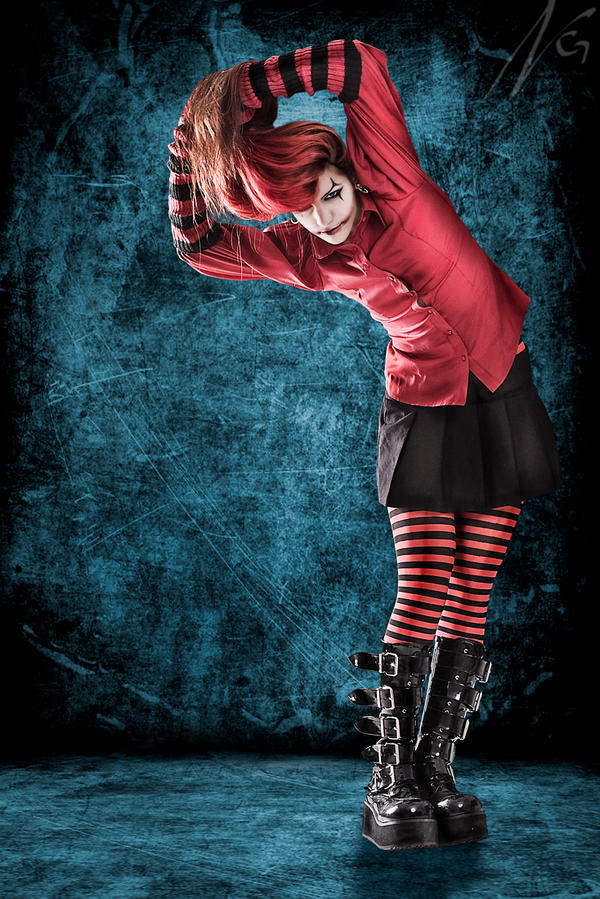




No comments:
Post a Comment